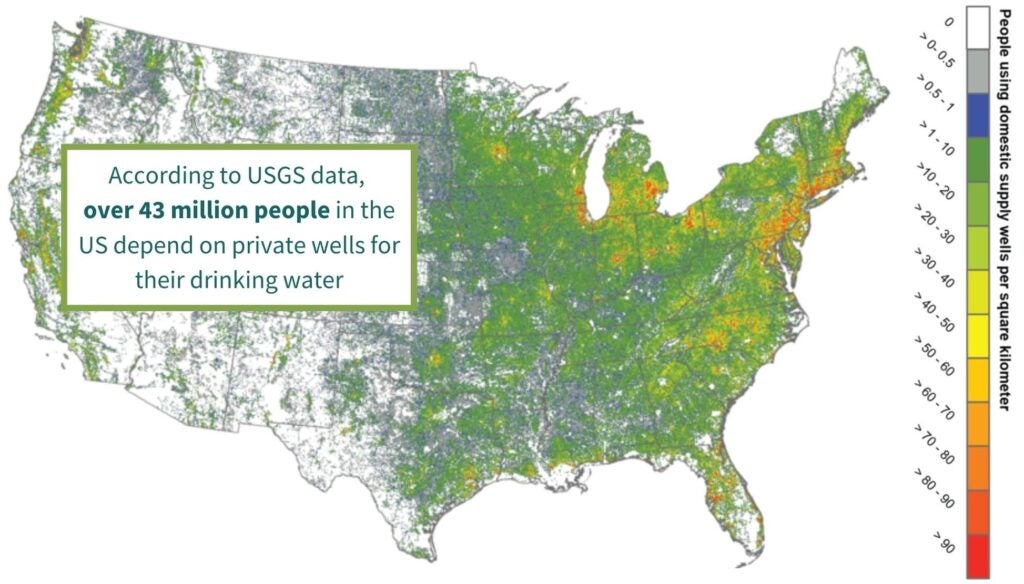MEMCARE-SRC
The Metals and Metal Mixtures, Cognitive Aging, Remediation and Exposure Sources (MEMCARE) Superfund Research Center aims to understand how metals and metal mixtures contribute to cognitive decline in older age and the biological mechanisms underlying these effects; and to develop new ways to detect and remove metal contaminants in drinking water sources.
677 Huntington Avenue
Boston, MA 02115
Project 3: Mapping contaminated drinking water

Modeling spatial patterns of metals and metal mixtures in drinking water in the US
Across the US, tens of millions of individuals unknowingly consume drinking water with concentrations of metals that exceed regulatory guidelines.
The problem is more prominent in untreated water from private wells than in municipal drinking water supplies that undergo water treatment. Although private wells supply drinking water for more than 15% of the population, elevated concentrations of metals in these wells may go undetected and unremediated due to sporadic and incomplete monitoring data.

Project Goals
The goals of Project 3 are to:

- Develop a novel statistical method to identify populations potentially at risk for elevated exposures to metals through contaminated drinking water.
- Develop a map of metal mixtures characteristic of drinking water exposures in different regions.
- Investigate whether there are socioeconomic differences or disparities based on metal concentrations in drinking water.
Our Approach
Project 3 is developing statistical models (based on logistic regression and random forest methods) to predict concentrations of metals and metal mixtures (arsenic, cadmium, and lead) in private wells based on 50 years of aggregated well data from the National Water Quality Monitoring Council, in addition to information about hydrological and geological features associated with metal occurrence.
In addition, together with the Environmental Working Group, we are examining decades of public water supply records in combination with information on point sources and indicators of socioeconomic disparities to determine whether elevated concentrations of metals in public drinking water supplies are associated with indicators of environmental justice.
Project Team
Recent Publications
Mona Q Dai, Xindi C Hu, Brent A Coull, Chris Campbell, David Q Andrews, Olga V Naidenko, and Elsie M Sunderland. 4/1/2025. “Sociodemographic Disparities in Exposures to Inorganic Contaminants in United States Public Water Systems.” Environ Health Perspect.
Mona Q Dai, Benjamin M Geyman, Xindi C Hu, Colin P Thackray, and Elsie M Sunderland. 2023. “Sociodemographic Disparities in Mercury Exposure from United States Coal-Fired Power Plants.” Environ Sci Technol Lett, 10, 7, Pp. 589-595.
Xindi C Hu, Mona Dai, Jennifer M Sun, and Elsie M Sunderland. 3/2023. “The Utility of Machine Learning Models for Predicting Chemical Contaminants in Drinking Water: Promise, Challenges, and Opportunities.” Curr Environ Health Rep, 10, 1, Pp. 45-60.
Mayuri Bhatia, Aaron J Specht, Vallabhuni Ramya, Dahy Sulaiman, Manasa Konda, Prentiss Balcom, Elsie M Sunderland, and Asif Qureshi. 10/5/2021. “Portable X-ray Fluorescence as a Rapid Determination Tool to Detect Parts per Million Levels of Ni, Zn, As, Se, and Pb in Human Toenails: A South India Case Study.” Environ Sci Technol, 55, 19, Pp. 13113-13121.